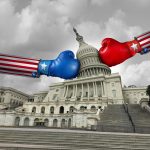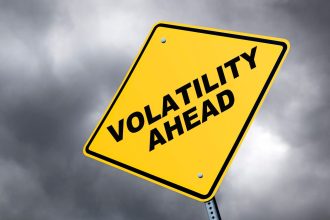“Though I reached my first 6 figures before I turned 30, I still suffered from lingering debt and poor financial management, even as a financial professional.” says Marc Russell, a former financial advisor and founder of BetterWallet.
A salary of $100,000 seems to be the magic number indicating the attainment of financial success. First generation high income professionals however, tend to notice quickly that the joy of reaching that goal is fleeting with much of the income going out as quickly as it comes in. “It wasn’t until I focused on lowering my life expenses where my life took a turn for the better. This included simplifying my life, paying off $80,000 of debt, and focusing on what makes me happy vs. what confirms my status to others,” Marc says.
For high income Black professionals, lifestyle expenses can feel like a luxury tax on top of other financial priorities or burdens. Outside of combatting geographic cost of living and inflation like most other Americans, the path to attaining the high income many times comes riddled with:
- Student debt;
- Family financial support;
- A lack of financial education;
- High credit card debt;
- The dream of financial independence.
These variables can lead to feelings of financial desperation that makes long term planning around retirement or financial freedom seem unreachable.
Student Debt
“Millennials were told by everyone from their guidance counselors, to family members, to go to college so that we could get a good job, because obtaining a degree meant guaranteed access to higher paying jobs,” says Nika Booth, Student loan expert and founder of Debt Free GonnaBe. “This push was especially true for Black Millennials, many being the first ever in their family to go to college,” she says.
I remember being told “don’t worry about it, everyone takes out student loans”, when I asked an advisor about college tuition fees in 2008. Some of that debt I still carry almost 20 years later.
The rising cost of college tuition and systemic barriers in wages, employment, and lack of generational wealth made the ability to fund a college education impossible, causing many Black millennials and their families to take on student loan debt. Nika has helped borrowers get $1M+ in student loan forgiveness. She notes that the systemic barriers don’t go away once higher education is attained, and that Black women especially still earn less than their White counterparts with the additional costs of the debt.
Financial Socialization Vs. Financial Literacy
With greater access to financial education content now than ever before, a lack of financial literacy in Black communities is a half truth. While some experts agree that financial literacy isn’t enough, there is still a general reluctance to acknowledge the role of systemic inequality, exclusion, and the intentional destruction of Black wealth building efforts throughout the history of the U.S.A. Nonparticipation in financial systems and a general mistrust towards those systems does not denote a lack of financial literacy as much as it points to evidence of financial trauma.
“Traditional financial education doesn’t address financial trauma or the unique experiences of Black Americans, and lenders such as credit card companies and loan servicers, directly benefit from that,” says Markia Brown, an Accredited Financial Counselor® and founder of The Money Plug. “They see credit cards offering hundreds of thousands of dollars and lavish rewards, and are so focused on the benefits, they don’t see the extremely high interest rates, hidden terms, and fees associated with the account,” she says.
For high-income professionals, this can lead to financial behaviors like overspending and poor money management due to the habits they’ve developed based on the unconscious beliefs they have about money that were learned during their childhood and adolescent years.
Markia developed a framework for financial service providers that acknowledges the existence of these traumas while creating culturally sensitive financial education and counseling services using the acronym B.L.A.C.K. which stands for:
- Broaden Recruitment;
- Learn Cultural Sensitivity;
- Adjust Financial Education;
- Create Accessible Services;
- and Kickstart Representation.
The onus isn’t just on financial service providers to shift our mindset. We’ve got to do some self healing and auditing of our values and financial goals. We have the power to change the stories we tell ourselves about money. However, left unexamined, the impact of our observations, experiences, and socialization often override high incomes and financial education.
“Growing up we were taught that saving and investing was reserved for the rich or folks who have a high discretionary income. We need to change that narrative,” says Marc who wishes he knew earlier in his career that even when you reach your number, that it won’t feel like it’s enough without systems in place to put your money to work.
“Instead of thinking about how much we can save or invest, we need to rewire our brains to think “How can I start with what I have?” he says.
The Dream Of Financial Independence
“When I became a teacher at 22, I had no idea what FIRE was and wasn’t particularly concerned with planning for retirement,” says Melissa Jean-Baptiste, co-founder of Millennial In Debt and author of “So This Is Why I’m Broke”.
Melissa shares that she started investing $121 dollars a check into a 403B and that slowly over time she increased her contributions whenever she got a salary increase. In doing so she unintentionally set herself up to achieve Coast FIRE at 33 years old.
Melissa explains that Coast FIRE is a variant of traditional FIRE (financial independence retire early) that is not only far more attainable, but also provides more financial flexibility to those who have other financial responsibilities they want to tackle.
The first step for anyone looking to achieve FIRE or Coast FIRE is to sit down and calculate their annual expenses. Once you know how much you need to live off of for a year, multiply that number by 25. This will give you your FIRE number. That is the number you’d need to be able to comfortably retire and maintain your current lifestyle.
“The benefit of Coast FIRE and other variations like Lean FIRE or Barista FIRE is that you don’t need to save or invest that large number. What you need to do is start. By starting your investment journey where you’re at, you give yourself the opportunity for compound interest to grow your money,” she says.
Melissa reached Coast FIRE on a teacher salary while paying off $102,000 in student loans and saving to buy her first home. “Even if I never invest another dollar, I have enough time before I reach the traditional retirement age for compound interest to work its magic and hit my financial independence number.”
Pain Points And Solutions
As a financial therapist and financial counselor who works with high income professionals stuck in a paycheck to paycheck cycle the most frequent pain points I see include the following:
- The desire to save, invest, and enjoy leisurely spending;
- A difficult time establishing financial boundaries with friends and family;
- No formal budgeting system or strategy;
- A desire to build community.
I recommend that my clients establish a budget that provides them data on where they can cut expenses and whether or not they need to increase income to hit their saving or investing goals. They should also practice establishing financial boundaries by offering alternative solutions to spending or giving money to friends and family. Lastly, they should build relationships with likeminded individuals and financial professionals to establish a financial team to facilitate community. It’s never too late to start but the best time to start is right now.
Read the full article here














